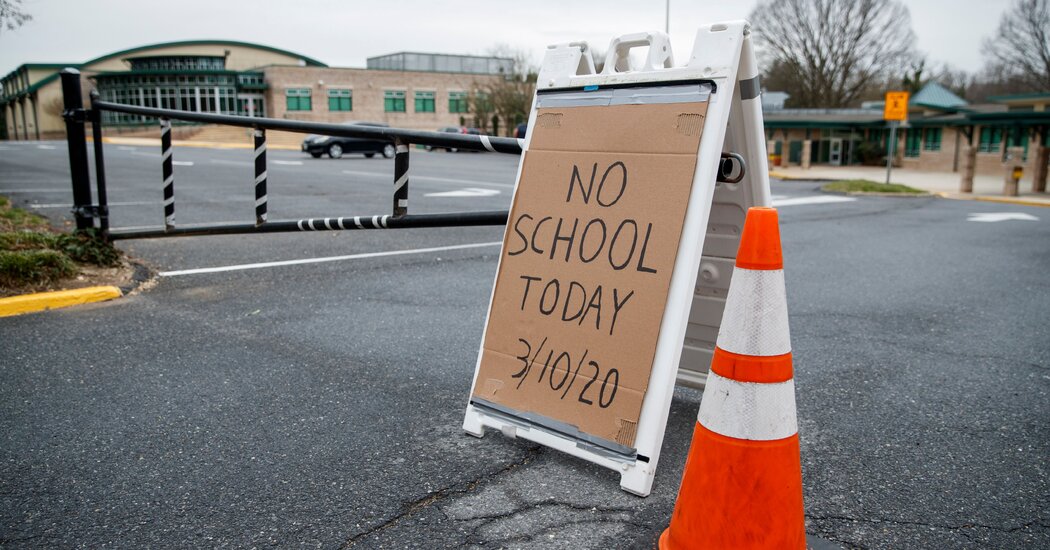But other experts noted that the impact of preventive measures taken by states — including stay-at-home orders, closures of restaurants and nonessential businesses and limits on large social gatherings — simultaneously or shortly after school closings, made it hard to determine the specific role of schools in such analyses.
“I think we have to be incredibly cautious when interpreting estimates from a study like this,” said Julie Donohue, a professor of public health at the University of Pittsburgh who co-wrote an editorial about the study. “In particular, I think it’s important to emphasize that we really can’t isolate the impact of school closures from other interventions.”
Dr. Donohue added that “even if these numbers were accurate or valid, we don’t know how much of the effect would be derived from reducing contacts among kids at school, versus reducing contacts among parents who have to stay home from work because their children are out of school.”
Given that the study is being published just as districts around the country are struggling with whether and how to reopen schools, some experts expressed concern that its estimates about the impact of closing schools early in the pandemic would be seized upon as an argument that schools should remain closed. Experts on public health and education have recommended that communities and schools should work toward reopening with strong health precautions in place, because in-person schooling has such tremendous value for children’s academic, social and emotional development.
The Coronavirus Outbreak ›
Frequently Asked Questions
Updated July 27, 2020
-
Should I refinance my mortgage?
- It could be a good idea, because mortgage rates have never been lower. Refinancing requests have pushed mortgage applications to some of the highest levels since 2008, so be prepared to get in line. But defaults are also up, so if you’re thinking about buying a home, be aware that some lenders have tightened their standards.
-
What is school going to look like in September?
- It is unlikely that many schools will return to a normal schedule this fall, requiring the grind of online learning, makeshift child care and stunted workdays to continue. California’s two largest public school districts — Los Angeles and San Diego — said on July 13, that instruction will be remote-only in the fall, citing concerns that surging coronavirus infections in their areas pose too dire a risk for students and teachers. Together, the two districts enroll some 825,000 students. They are the largest in the country so far to abandon plans for even a partial physical return to classrooms when they reopen in August. For other districts, the solution won’t be an all-or-nothing approach. Many systems, including the nation’s largest, New York City, are devising hybrid plans that involve spending some days in classrooms and other days online. There’s no national policy on this yet, so check with your municipal school system regularly to see what is happening in your community.
-
Is the coronavirus airborne?
- The coronavirus can stay aloft for hours in tiny droplets in stagnant air, infecting people as they inhale, mounting scientific evidence suggests. This risk is highest in crowded indoor spaces with poor ventilation, and may help explain super-spreading events reported in meatpacking plants, churches and restaurants. It’s unclear how often the virus is spread via these tiny droplets, or aerosols, compared with larger droplets that are expelled when a sick person coughs or sneezes, or transmitted through contact with contaminated surfaces, said Linsey Marr, an aerosol expert at Virginia Tech. Aerosols are released even when a person without symptoms exhales, talks or sings, according to Dr. Marr and more than 200 other experts, who have outlined the evidence in an open letter to the World Health Organization.
-
What are the symptoms of coronavirus?
-
Does asymptomatic transmission of Covid-19 happen?
- So far, the evidence seems to show it does. A widely cited paper published in April suggests that people are most infectious about two days before the onset of coronavirus symptoms and estimated that 44 percent of new infections were a result of transmission from people who were not yet showing symptoms. Recently, a top expert at the World Health Organization stated that transmission of the coronavirus by people who did not have symptoms was “very rare,” but she later walked back that statement.
“I do worry that these large estimates of the effect of school closures will lead people to give up because it is going to be challenging to open schools,” Dr. Donohue said. “I do worry that some districts will look at these numbers and say, well, it’s just too hard and it’s not safe to reopen.”
Analyses of cellphone mobility data in March, by The New York Times and others, revealed that people in some states began spending more time at home and less time congregating in public spaces days to weeks before official shelter-in-place orders were enacted.
In the new report, a research team led by Dr. Auger analyzed case counts and deaths in all 50 states beginning on March 7, before the first closings, and ending on May 7, six weeks after the last closing orders. Some states closed their schools a week or more before implementing a more comprehensive lockdown; others did so simultaneously, or close to it. Covid-19 prevalence rates also varied widely, with states like New York and California at the high end and others, like Nebraska and Texas, on the lower end.
[ad_2]
Source link


